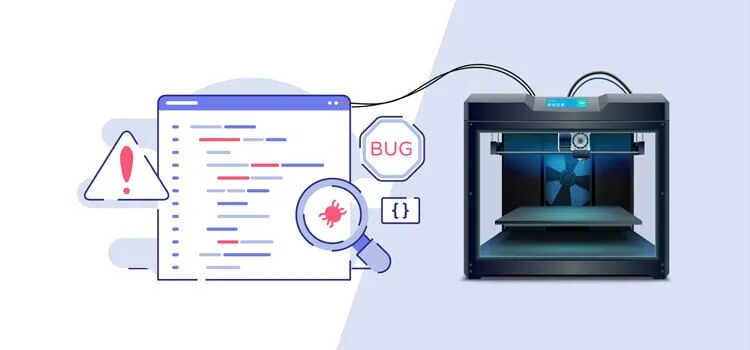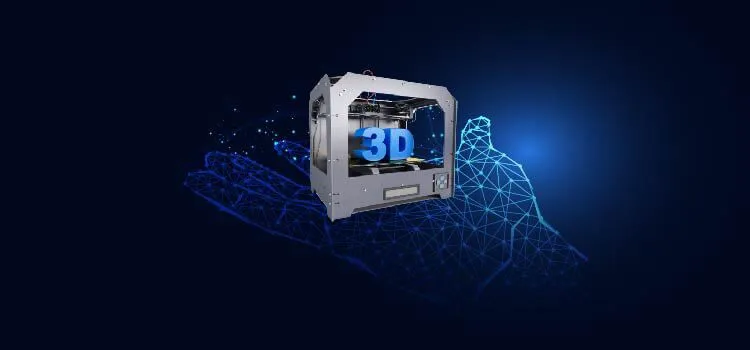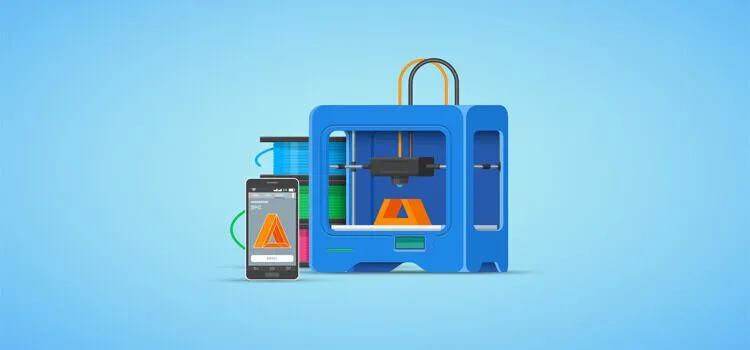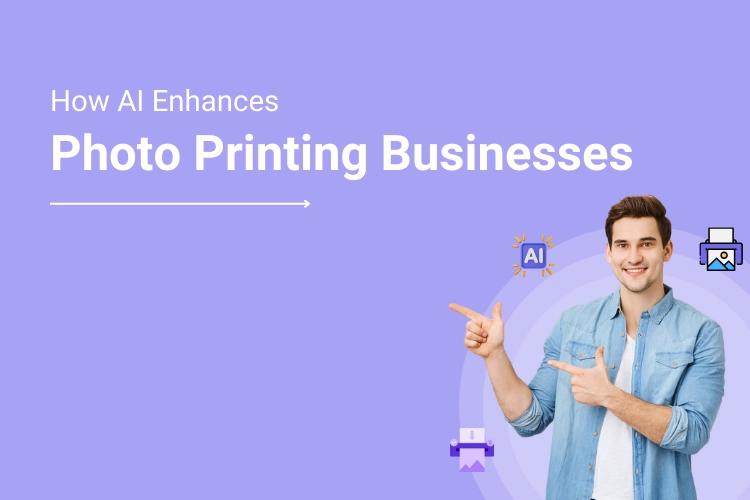Ever wondered about the impact of technology in the commercial sectors? You can behold scores of technology trends that are revolutionizing business processes including industrial ones. No matter whether it’s Artificial Intelligence (AI), Internet of Things (IoT), Robotics Process Automation (RPA), Data Science, Virtual Reality, Augmented Reality, or Cloud Computing, all of them have already made their mark on different spheres of business. Among all these technology trends, artificial intelligence is at the forefront and performing incredible jobs in various fields.
When it comes to the photo printing business, AI can accomplish some tricky tasks mimicking human intelligence smashingly in a flash. In the photo printing business, AI has the potential to carry out tasks right from the print job creation to continuous production. It can streamline the fruitfulness of the end-to-end photo printing process through deep learning from experience.
How can AI benefit photo printing business?
It can automate business functions, remove bottlenecks, and accomplish tasks at a rapid pace. This will let team members focus more on the strategic aspects of the business. While there are tools like online photobook designer software in the market, photo print vendors can invest in technology that keeps their services and devices relevant.
5 Ways AI Can Improve Your Photo Print Business Outcomes
Let’s throw light on how artificial intelligence can bring out an optimum outcome in a photo printing business.
1. Predictive Maintenance:

In order to streamline efficiency, predictive maintenance technique is what all the photo printing companies opt for. By default, photo printing devices contain integrated sensors that gather and scan data. This sensor is designed to foresee any likely bugs that may show up in the system. But the limitation it has is that it can’t regulate the volume of data generated by the print devices. This is where artificial intelligence comes into play.
With the utilization of the AI technology, photo printers can fetch real-time data and embed it into the printing devices. With this type of effective data, photo printing companies can develop techniques to extract as well as analyze data and come up with optimized and cost-effective maintenance procedures of photo printing devices.
2. Digital Automation:

Digital automation is a wonder in the current age but still there are many printing organizations including photo printing businesses resorting to old and antiquated manual system for their business operations. They are manually carrying out tasks like data entry, quality assurance, information validation, data migration, and what not allotting bulk of their precious time. These tasks can be executed with the process of digital automation like Robotic Process Automation (RPA) that operates like humans. RPA creates a virtual workspace that functions for 24 hours without creating any flaw.
However, this virtual workspace is incapable of foretelling any anomalies and inconsistencies. This is where AI comes into play as the integration of AI with RPA turns into a self-sustaining, powerful, and fruitful tool. This combined tool avails of algorithms, gathers complicated data, and then feeds the workspace to take precaution against the upcoming anomalies and discrepancies.
You can performs scads of manual tasks with this method including printing, order processing, invoice creation, and quality assessment. Already, many banks and insurance companies have started making use of AI and machine learning. This technology is leveraging algorithms and converting hand-written and typed data into digital files.
3. Real-time Response:

Artificial intelligence technology functions proactively that can tackle with many drawbacks of photo printing process. If you wish to print scores of photos, let’s say 30k copies, you can end up having flawed output if any problem occurs in the printing device. There can be multiple issues in photo printing like errors in the photo printout, the number of copies, and the ink supply for photo colorization.
To deal with these problems, many photo printing manufacturers provide downloadable patches along with the printers for specific operating systems and machines. In this case, AI technology can deliver real-time notifications and warnings to detect problems before it occurs. Thereafter, it will activate a protocol for immediate and handy response to skip drawbacks in printing process.
4. Security Threats Defense:

Cyber-attack through malware is a massive security threat for photo printers. Normally, in photo printing shops, it’s very common that customers connect multiple devices with printers. This facilitates the transmission of malware to the printers through these devices. Figuring out the source of malware is nearly impossible too due to a mammoth customer-base of these shops. In this case, deployment of AI technology with machine learning can fix this problem providing network-level analytics and real-time anomaly detection.
Having said that, AI can be a foe besides being a friend. As per experts’ opinion, new generation malware will leverage AI while invading its targets and evading detection to behave like a human attacker. However, for network printers that are predominantly IoT devices require a whole new range of security systems with the implementation of AI for self-protection from AI attackers.
5. Mobile Photo Printing:

One of the pain points of printing or photo printing is installing printer drivers for every single device, let it be a mobile or a computer. This is cumbersome and no doubt, it makes the printing process sluggish. Taking advantage of artificial intelligence can unburden the mobile-users from the unnecessary hassles of printer drivers. AI-powered printers can automatically detect and pick up data and enable mobile-users to print their necessary photographs driverlessly with some simple and facile configurations.
Related: Printing Photobooks? Mobile enabled Web-to-Print is the answer to serve all of your customers
How Artificial Intelligence Will Impact Photo Printing Business?
- AI-operated software incorporates smart algorithms to recommend perfect layouts to diminish paper waste.
- With the availability of AI-driven client-behavioral data, printing industry leaders are dispatching things like personalized mail, catalog, etc. as per their personal choices.
- Many online product customization shops are making use of scores of printing methods such as screen printing, sublimation, Direct to Garment (DTG), etc. from a single centralized system supported by AI without much of a human involvement. This is how they are offering a wide range of products to their customers expanding the reach of their businesses.
- A number of online store owners are managing several manufacturing units connected through high-end printers leveraging AI-algorithms. This slashes human effort and elevate store efficiency.
Ready to Improve Your Photo Printing Business Outcomes With AI?
So, is AI going to be a boon or a bane for global businesses? No matter whether it’s a photo printing industry or any other industry, it should logically leave identical effects. Are you jittery thinking machines will supersede humans in the commercial sector or aid humans in performing jobs? Well, the impressions on this point are divided among the experts but we can just infer that the outcome would be in between both extremes.
Artificial intelligence will continue revolutionizing industrial processes. Humans, they have to continue focusing on learning, developing skills, and discovering themselves. With the combination of both AI technology and human skill as well as effort, businesses can flourish in the future all the more.
Interested in starting a photo printing business? To know more about the photo album design software you can straightaway contact us at [email protected] or fill this form, and a member of our staff will get in touch with you at the earliest.
More for you
- Top 8 Print MIS Software…Read More→
- Top 10 Wholesale Promotional Product Suppliers in the United States…Read More→
- 9 Best Screen Printing Machines…Read More→
- Top 5 Print Estimating Software.. Read More→
Last updated 5 July 2023




